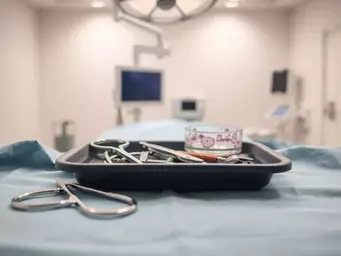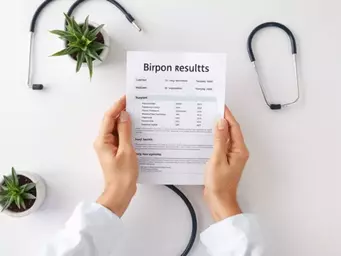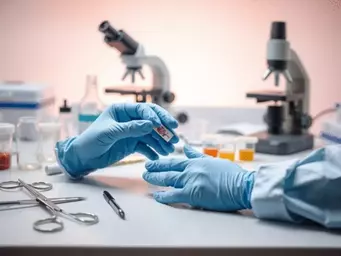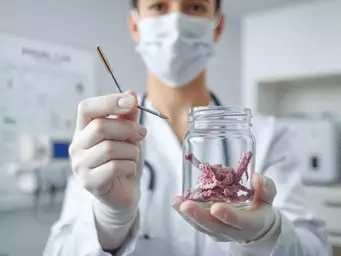Every step towards understanding your health can help alleviate anxiety, especially when it comes to medical procedures. One such procedure that often raises questions is the Fine Needle Aspiration Biopsy (FNA). Let’s explore what you will learn about this diagnostic technique and how it can empower you as a patient.
What You Will Learn
- FNA is a minimally invasive procedure that uses a thin needle to collect tissue samples for diagnosis.
- The procedure is commonly performed on thyroid nodules, breast lesions, and lung masses.
- FNA provides quick results, often within a few days, which can facilitate timely treatment decisions.
- The procedure has a low risk of complications and allows for a quicker recovery compared to traditional surgical biopsies.
- Understanding cytology and pathology enhances the accuracy of FNA results, guiding treatment plans effectively.
- Being informed about the FNA process empowers patients to engage proactively with their healthcare providers.
- Preparation for the FNA appointment is key; asking questions and understanding the procedure can reduce anxiety.
The FNA Biopsy Process: From Sample to Diagnosis
Understanding each step of the Fine Needle Aspiration (FNA) biopsy can help patients feel more prepared and less anxious. This visual outlines the typical flow of the procedure and subsequent analysis.
1. Procedure Initiation & Needle Insertion
A thin needle is inserted into the target area, often guided by imaging (ultrasound/CT). Minimally invasive and typically quick.
2. Sample Collection & Preparation
Cells are aspirated into the needle. Samples are then spread on slides or rinsed for laboratory analysis.
3. Cytology & Pathology Analysis
Cytologists examine individual cells, while pathologists assess tissue structure to identify abnormalities.
4. Diagnosis & Treatment Planning
A comprehensive diagnosis is made, guiding healthcare providers in formulating an appropriate treatment plan.
Understanding Fine Needle Aspiration Biopsy: A Comprehensive Overview
When it comes to understanding your health, knowledge is crucial! One procedure that often raises questions is the Fine Needle Aspiration Biopsy (FNA). This minimally invasive technique is used to collect cells from a specific area in your body for diagnostic purposes. Knowing what FNA is and how it works can help alleviate some of the anxiety surrounding the procedure.
Essentially, a fine needle aspiration biopsy uses a thin, hollow needle to extract tissue samples. These samples are then examined microscopically to identify any abnormalities. FNA can provide key insights into various conditions, helping healthcare providers to make informed treatment decisions.
What Is Fine Needle Aspiration Biopsy (FNA)?
The Fine Needle Aspiration Biopsy is a technique that involves inserting a fine needle into a target area, often guided by imaging technologies such as ultrasound or CT scans. This method is particularly useful because it allows for precise targeting of masses, cysts, or nodules in different organs.
- Commonly used for thyroid nodules, breast lesions, and lung masses
- Minimally invasive and typically performed on an outpatient basis
- Provides quick results, often within a few days
Understanding the basics of FNA is essential. This knowledge can empower you and make the process less daunting. Remember, each step is designed to enhance your comfort and wellbeing!
Key Benefits and Importance of the FNA Procedure
The Fine Needle Aspiration Biopsy offers numerous benefits that make it a preferred choice for diagnostic procedures. Firstly, it's less invasive than surgical biopsies, which means a quicker recovery and less discomfort afterward. As the Cleveland Clinic highlights, FNA is a relatively quick and safe procedure.
- Reduced risk of complications compared to larger surgical biopsies
- Minimal scarring and faster healing time
- Ability to provide immediate results, facilitating timely treatment decisions
These factors are why many healthcare providers, including myself, advocate for FNA in appropriate clinical scenarios. It's an excellent tool for obtaining critical information while minimizing patient anxiety.
Understanding the Role of Cytology and Pathology in FNA
After the FNA procedure, the collected samples are sent to a laboratory for analysis. This is where the roles of cytology and pathology come into play. Cytologists examine the cells to identify any abnormalities that may indicate disease. Advances in this field, such as those discussed in recent research, continue to improve diagnostic accuracy.
- Cytology focuses on individual cells and their characteristics
- Pathology provides a broader overview, looking at tissue structures and patterns
- Both disciplines work together to provide a comprehensive understanding of the results
By collaborating with cytologists and pathologists, I ensure that our patients receive the most accurate diagnosis possible. This teamwork is vital for guiding treatment plans and supporting patient care effectively.
The Process of Fine Needle Aspiration Biopsy: How It Works
Now that we've covered the basics of FNA, let's explore the actual process involved! Understanding each step can help you feel more prepared and less anxious about the procedure.
We Want to Hear From You!
Have you or someone you know undergone a Fine Needle Aspiration Biopsy? What was your experience like? Share your thoughts and insights below:
Frequently Asked Questions About Fine Needle Aspiration Biopsy (FNA)
- What is a Fine Needle Aspiration Biopsy (FNA)?
- An FNA is a minimally invasive diagnostic procedure that uses a thin needle to collect cell samples from a specific area of the body for microscopic examination to identify abnormalities.
- What conditions or body parts is FNA commonly used for?
- FNA is frequently used to investigate thyroid nodules, breast lesions, and lung masses, among other conditions.
- What are the main benefits of an FNA over traditional biopsies?
- FNA offers several benefits, including being less invasive, having a quicker recovery time, minimal scarring, a lower risk of complications, and often providing faster results to aid timely treatment decisions.
- How do cytology and pathology contribute to FNA results?
- Cytology involves the examination of individual cells, while pathology assesses tissue structures and patterns. Both disciplines work together to provide a comprehensive and accurate diagnosis from the collected samples.
- How can I prepare for my FNA appointment?
- To prepare, gather a list of questions for your healthcare provider, understand any pre-procedure instructions (like dietary restrictions or medication adjustments), and consider bringing a friend or family member for support.
Summarizing the Fine Needle Aspiration Biopsy Experience
As we wrap up our discussion on the fine needle aspiration biopsy (FNA), it's important to highlight the key aspects of this procedure. Understanding what to expect can significantly reduce anxiety and promote a more positive experience. Here are some key takeaways that can empower you as a patient:
- Minimally Invasive: The FNA is a less invasive procedure compared to traditional biopsies, using a thin needle to obtain tissue samples.
- Quick Procedure: Most FNA procedures take only a few minutes, allowing for quick recovery and minimal downtime.
- Diagnostic Clarity: FNA is highly effective in diagnosing a variety of conditions, including cancer, making it a vital tool in medical practice.
- Low Risk of Complications: While every medical procedure carries risks, the likelihood of serious complications from FNA is quite low.
By keeping these points in mind, you can approach your FNA with confidence, knowing that it’s a crucial step in understanding your health better!
The Value of Being Informed: Empowering Yourself as a Patient
Knowledge is power, especially when it comes to your health. Being informed about the fine needle aspiration biopsy procedure means you can make educated decisions about your care. Here are some tips to help empower yourself:
- Ask Questions: Don’t hesitate to reach out to your healthcare provider with any questions or concerns about the procedure. Understanding the process can alleviate anxiety.
- Research: Utilize resources from What Is A Biopsy to learn more about FNA. Our articles are designed to provide clear, doctor-reviewed information that can guide you.
- Understand the Results: Familiarize yourself with what to expect after your FNA. Knowing how results are interpreted can help you feel more in control.
Remember, being an informed patient not only enhances your experience but also fosters a collaborative relationship with your healthcare team.
Engaging with Your Healthcare Provider: Questions to Ask
Financial Considerations: Understanding Costs and Insurance Coverage
When preparing for your fine needle aspiration biopsy, it’s crucial to address any financial concerns upfront. Engaging in a discussion about costs can ease potential worries:
- Procedure Costs: Ask your provider about the total cost of the FNA procedure, including any associated fees.
- Insurance Coverage: Inquire if the procedure is covered by your insurance plan and what your out-of-pocket expenses might be.
- Payment Plans: If the costs are significant, don’t hesitate to discuss payment options or financial assistance programs.
Understanding the financial aspects can help you focus on your health without the added stress of unexpected bills later on!
Additional Resources: Where to Find More Information on FNA
Staying informed is essential, and there are plenty of resources available that can provide more insights into fine needle aspiration biopsies:
- Official Medical Websites: Websites like the American Cancer Society and Mayo Clinic offer comprehensive information about FNA procedures.
- Patient Support Groups: Connecting with other patients can provide emotional support and shared experiences regarding the procedure.
- Educational Videos: Look for videos that visually explain the FNA process; sometimes seeing it can help reduce anxiety.
Utilizing these resources can further empower you as you prepare for your FNA biopsy and navigate your healthcare journey.
Patient Education: Preparing for Your FNA Appointment
Preparation is key to making your fine needle aspiration biopsy experience seamless. Here are some steps you can take to ensure you’re ready:
- Gather Questions: Before your appointment, make a list of questions you want to ask your healthcare provider about the procedure.
- Understand Pre-Procedure Instructions: Confirm any dietary restrictions or medication adjustments you need to make ahead of time.
- Bring Support: Consider bringing a friend or family member with you to your appointment for emotional support and to help remember important information.
By taking these steps, you’ll not only feel more prepared for your appointment but also more empowered to engage in your healthcare journey!
Recap of Key Points
Here is a quick recap of the important points discussed in the article:
- Minimally Invasive: The FNA is a less invasive procedure compared to traditional biopsies, using a thin needle to obtain tissue samples.
- Quick Procedure: Most FNA procedures take only a few minutes, allowing for quick recovery and minimal downtime.
- Diagnostic Clarity: FNA is highly effective in diagnosing a variety of conditions, including cancer, making it a vital tool in medical practice.
- Low Risk of Complications: While every medical procedure carries risks, the likelihood of serious complications from FNA is quite low.
- Empower Yourself: Ask questions, do your research, and understand the results to enhance your FNA experience.








